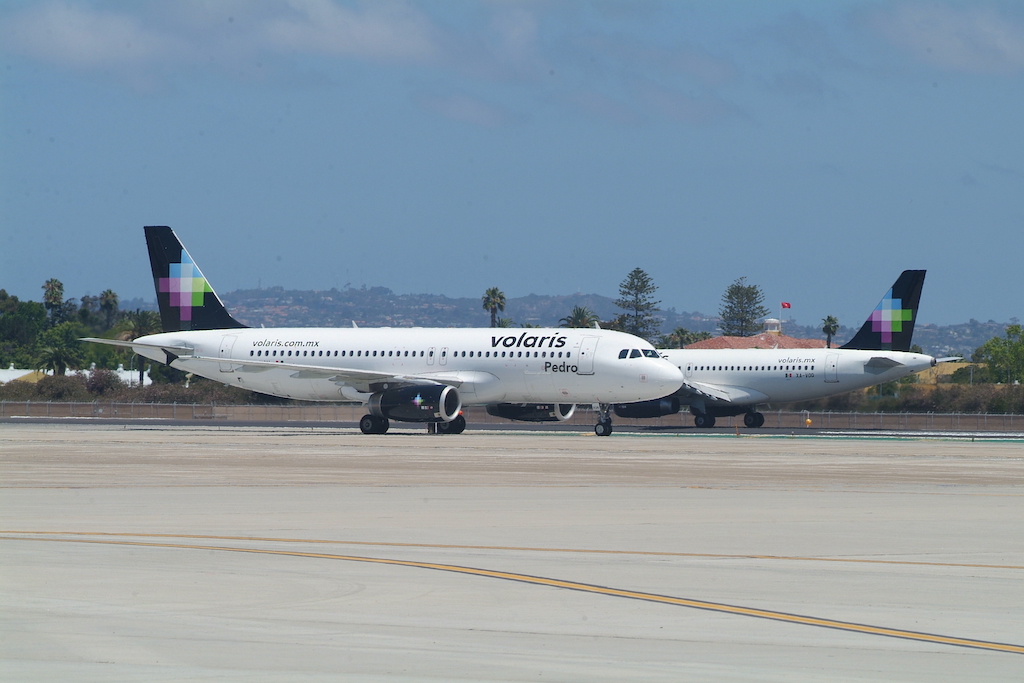Volaris Looks South for Growth as Mexico's Domestic Airline Market Recovers

Photo Credit: San Diego International Airport
Mexican discounter Volaris is grabbing growth opportunities at home and venturing further south in Latin America as travel rebounds from the Covid-19 pandemic.
The airline plans to add 25 Airbus A320neo family aircraft to its fleet by the end of 2022, when it anticipates flying 113 planes total, fueling elevated capacity growth that will surpass pre-crisis levels. These planes will allow Volaris to increase its share in the key Mexico City market; expand in other Mexican cities, particularly Guadalajara and Tijuana; and launch a new subsidiary in El Salvador.
“We’re one of the most profitable airlines worldwide with room to grow," said CEO Enrique Beltranena during a quarterly earnings call on Friday. The airline reported a rare pandemic profit free of government aid of MXP 1.54 billion ($78 million) in the second quarter.
Domestic Mexican growth is Volaris' top priority over the next year-and-a-half. The carrier has the unique opportunity to fill the gap left by Interjet, which suspended flights in December 2020 and few expect to resume operations, and cuts at Aeromexico that is restructuring under U.S. Chapter 11 bankruptcy protection. Volaris is actively adding flights in slot-constrained Mexico City where, as executive vice president Holger Blankenstein put it, they see the "biggest capacity gap compared to pre-Covid levels."
Competitors also see an opening. Aeromexico is rapidly resuming flights and budget competitor Viva Aerobus is growing out of the crisis. In July, overall Mexican domestic capacity is down 2.6 percent compared to 2019 solely on the loss of Interjet, according to Cirium schedule data. However, capacity at Aeromexico is up 11 percent, Viva Aerobus nearly 30 percent and Volaris 18 percent.
Outside of Mexico, Volaris has its eyes set on Central and South America. The new El Salvadoran subsidiary will launch in either the late third quarter or early fourth quarter with flights to Mexico and the U.S., said Blankenstein. This will complement Volaris's Costa Rica subsidiary that will receive a third aircraft — returning its fleet to its pre-crisis status — by the end of the year. And, new flights between Mexico City and Bogotá begin in October as the company's first foray into South America. Additional service to Colombia from Central America is likely soon, added Blankenstein.
One market where Volaris is not growing is the U.S. This is the result of the Federal Aviation Administration's decision to downgrade Mexico's safety rating in May, which barred Mexican carriers from adding any new flights to the country. Volaris executives spoke little about the downgrade and focusing instead on domestic and Latin American opportunities, as well as adding new U.S. flights from Central America under its Costa Rican and El Salvadoran subsidiaries that circumvents the FAA limits on Mexican carriers.
Volaris' rebound is impressive — but not surprising — given the lingering pandemic. By its own measure, only 16.4 percent of Mexicans are fully vaccinated. That's better than the global average but middle of the pack in Latin America, and well below the 48 percent of Americans who are fully inoculated. And executives highlighted the spread of Covid-19 variants as a potential risk in the second half of the year that barred them from making many financial forecasts for the period.
But Mexico was the first country globally to recover to pre-pandemic travel levels in June, the latest Skift Recovery Index found. This rebound is driven largely by the lodging industry, which is likely fueled by a surge in pent-up demand from U.S. leisure travelers.
Volaris acknowledged this surge in leisure, as well as visiting friends and relative traffic, reporting that 90 percent of its seats to the U.S. were full in the second quarter.
“Good — great results, actually," Deutsche Bank Analyst Michael Linenberg said of Volaris' second quarter numbers in a rare moment of analyst praise.
The airline's profit followed a 38 percent jump in revenues and a 15 percent rise in expenses in the June quarter compared to 2019. Its earnings before interest and taxes margin was 23 percent versus to just 7.9 percent two years ago. And, in a sign of things returning to something like normal, executives touted the nearly 22 percent increase in total unit revenues — or TRASM — instead of cash burn or other crisis metrics. Overall passenger traffic was up 13 percent and capacity up 14 percent versus 2019.
